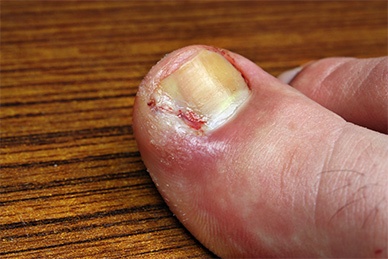- Cyst removal
- Suturing
- Mole removal
- Implanon insertion and removal
- Dressings
- Skin biopsies
- Joint injections
- Cryotherapy
- Incisions & drainage
- Ingrown toenails
- Iron infusions
Please note that it’s best to first speak with a GP if you have a particular procedure in mind. There are various fees depending on which procedure you may need. Our charges cover the cost of using the treatment room, the materials as well as nurse assistance to make sure your procedure goes as smoothly as possible.
To find out more about the costs involved, please speak with our reception staff.
What is Minor Surgery?

Minor surgery refers to minimally invasive surgical procedures that involve superficial resection (cutting out) of skin, mucous membranes and connective tissues. It usually requires small incisions and local anaesthesia and is usually performed in your doctor’s clinic or an outpatient setting under appropriate aseptic conditions. Most minor surgeries can be performed by a general surgeon.
Some important types include:
- Shave excision
- Biopsy
- Arthroscopy
- Laparoscopy
- Cataract surgery
Shave Excision
Shave excision is a minor surgery that involves the removal of lesions, moles or tumours by using sharp surgical instruments under local anaesthesia. Antibiotic ointment may be applied once the wound is closed and then covered with a bandage.
Biopsy
A biopsy is a procedure in which a small sample of suspicious tissue or fluid within the body is removed and examined in the laboratory.
A biopsy procedure is indicated for the diagnosis and treatment of most cancers and the progression of certain diseases.
The different methods of obtaining a biopsy include:
- Tissue Scraping: This is the removal of cells from the surface layer of the suspicious tissue.
- Excisional Biopsy: This is the surgical removal of a piece of tissue for examination.
- Punch Biopsy: A special instrument is used to punch a hole in the skin to obtain the sample.
- Needle Biopsy: A hollow needle is used to obtain a sample from tissues underneath the skin.
- Endoscopic Biopsy: A tube-like surgical device fitted with a camera is used to obtain a tissue sample.
- Fine Needle Aspiration: A fine needle is used to obtain cells from a suspicious growth.
Arthroscopy
Arthroscopy is a minimally invasive surgical procedure in which an arthroscope is inserted into a joint for the diagnosis and treatment of joint conditions. An arthroscope is a small, fibre-optic instrument consisting of a lens, light source, and video camera. The camera transmits images of the inside of your joint onto a monitor, allowing your surgeon to look for damage, assess the type of injury and repair the problem.
Arthroscopy is indicated for treating torn tendons or cartilage, debridement (cleaning out) of damaged tissue, and joint inflammation (synovitis).
Laparoscopy
Laparoscopy is a minimally-invasive surgical procedure that uses a laparoscope to diagnose various abdominal and pelvic disorders. A laparoscope is a thin fibre-optic device fitted with a camera and lens. Images from the camera are transmitted to a large monitor for your doctor to view the inside of your body.
Laparoscopy is indicated for certain conditions associated with the abdomen, urinary system, and female reproductive system.
Cataract Surgery
A cataract is an eye condition causing blurred or cloudy vision that is often corrected with prescription glasses. Sometimes cataracts can worsen to the point where you will need minor surgery. Under local anaesthesia, small surgical instruments are used to replace your damaged lens with an artificial lens made of silicone, plastic, or acrylic.
Advantages of Minor Surgery
- Smaller incisions
- Minimal pain and scarring
- No extensive damage to the tissue
- Low risk of infection
- Short recovery time
